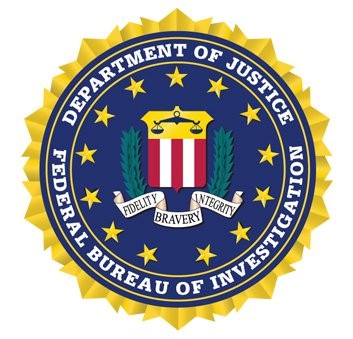If you are at least as old as I am, you will remember the TV show, “The FBI.” From 1965 to 1974, Efrem Zimbalist, Jr. portrayed Inspector Lewis Erskine, who “personified the calm, business-suited government agent who always tracked his criminals down, scientifically and methodically and with virtually no emotion at all… Neither he nor his partners allowed themselves to become emotionally involved in their work which focused on a range of crimes, from bank robbery to kidnapping to the occasional Communist threat to overthrow the government. The cases were based on real FBI files and ranged across the United States and involved counterfeiters, extortionists, organised crime, Communist spies, and radical bombings.”
For many years, the Federal Bureau of Investigation cultivated a positive image through shows like “The FBI,” and other media outreach. Described by its most famous director, J. Edgar Hoover in 1961, the FBI was “(e)stablished in 1908 as the investigative arm of the U.S. department of justice, (and) is a fact-finding agency which does not evaluate the results of its investigations or recommend prosecutive action…(t)he two primary areas of FBI activity are general investigations and security operations. Within the latter field, it has jurisdiction over espionage, sabotage and subversive activities on a nation-wide scale… the FBI…reports the results of its investigation(s) to the attorney general, chief legal officer of the United States, his assistants and the various U.S. attorneys in federal districts throughout the United States for decisions as to prosecutive action.”
Would J. Edgar recognize the organization he led from 1924 to 1972 in the 21st century? What effort does the FBI make to cultivate a “positive image” in today’s world?
Rather than focus on professional, dispassionate “fact-finding,” the Bureau has found itself involved in other avenues of image-making. For instance, in remarks given by the current FBI Director Christopher Wray to the National Association of Women Law Enforcement Executives in April of this year, the director noted that the Bureau was “working hard to remove barriers and create a reflective workforce—not just in terms of gender, but across a full spectrum of diversity…(t)he FBI is focused on recruiting and building a diverse workforce…(w)omen now make up 45% of our workforce overall and nearly a quarter of our senior executive positions…(w)e’ve also increased our recruiting initiatives at Historically Black Colleges and Universities and are expanding our recruiting focus to other minority-serving institutions…I’m proud that the FBI is addressing this important issue, but I know that we can do even better, and we will.”
These remarks underscore an emphasis on diversity and inclusion policies that have been in place at the Bureau since 2015, when “the FBI added diversity as one of the organization’s core values…(w)e stand committed, as today’s FBI, to fostering a culture of inclusivity and diversity.” In fact, “The FBI’s Office of Diversity and Inclusion was created in 2012 to provide guidance and implement programs that promote a diverse and inclusive workplace that allows all employees to succeed and advance.”
This office was created in response to Barack Obama’s Executive Order 13583, dated August 18, 2011, which “establish(ed) a coordinated Government-wide initiative to promote diversity and inclusion in the Federal workforce” by “highlight(ing) comprehensive strategies for agencies to identify and remove barriers to equal employment opportunity that may exist in the Federal Government’s recruitment, hiring, promotion, retention, professional development, and training policies and practices,” and to “identify appropriate practices to improve the effectiveness of each agency’s efforts to recruit, hire, promote, retain, develop, and train a diverse and inclusive workforce.”
While no one seriously disagrees that a modern workforce is not restricted to one race or sex alone, the FBI (as well as other federal agencies) exhibits a particular preoccupation with this issue. The 2015 Policy Directive that established the Diversity and Inclusion guidelines for the FBI created a “Diversity and Executive Council,” as well as “Diversity Advisory Committees,” a “Diversity Advisory Council,” and a “Diversity and Inclusion Coordinator.” These various levels of bureaucracy are tasked with ‘provid(ing) support to underrepresented groups within the FBI,” and “encourage employee and management participation in diversity events…and cultural awareness activities.” “Diversity training for supervisors and managers…includes a discussion of diversity and inclusion, as well as the use of work assignments as a professional development tool,” while “Diversity training for all other employees” includes “attendance at…diversity training event(s) or activit(ies)…completing an online course on a diversity and/or inclusion-related topic…participating in a workplace discussion group focusing on a diversity and/or inclusion topic (eg, a book, an article or an event)…”
The Report concludes tomorrow
Judge John Wilson (ret.) served on the bench in New York City
